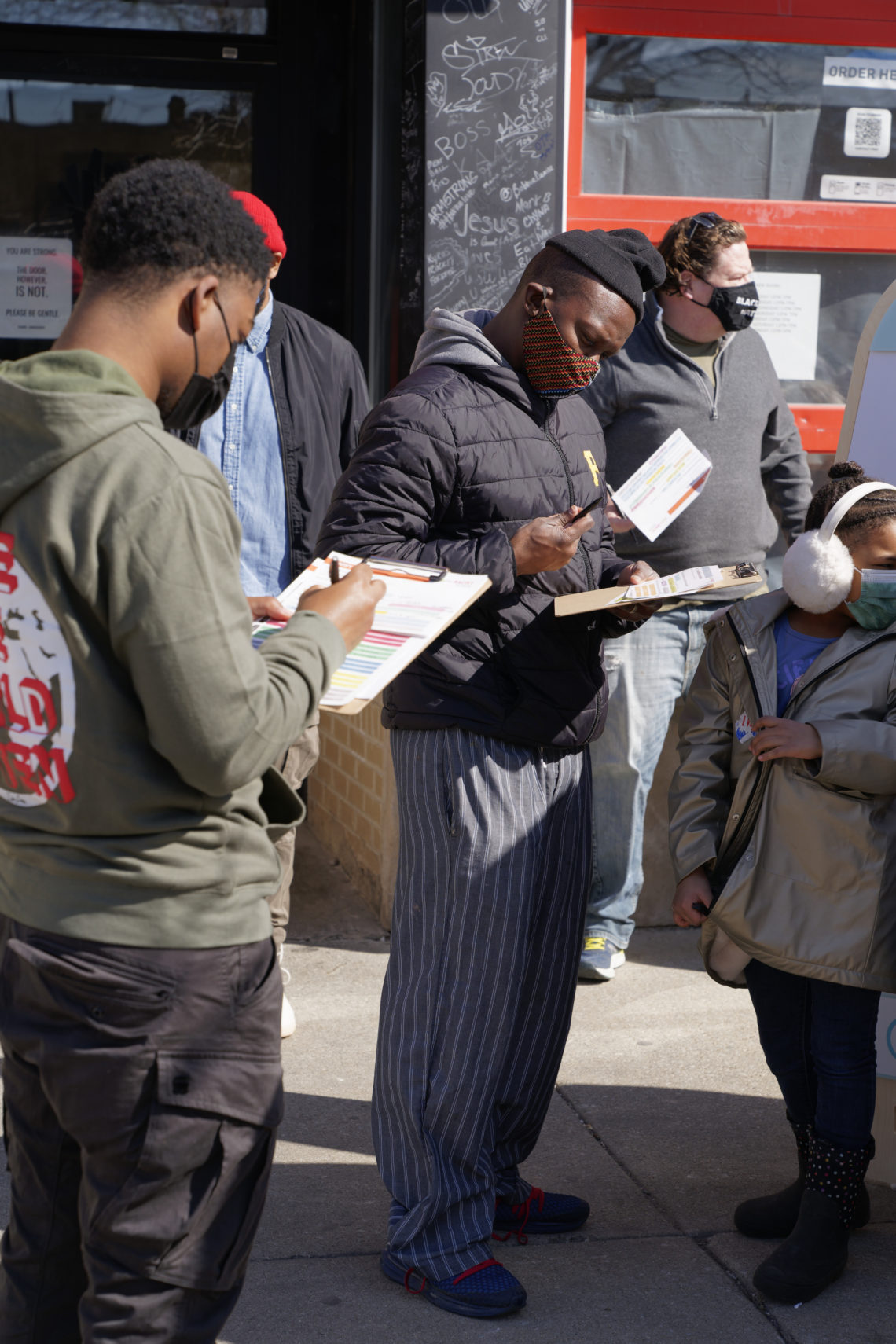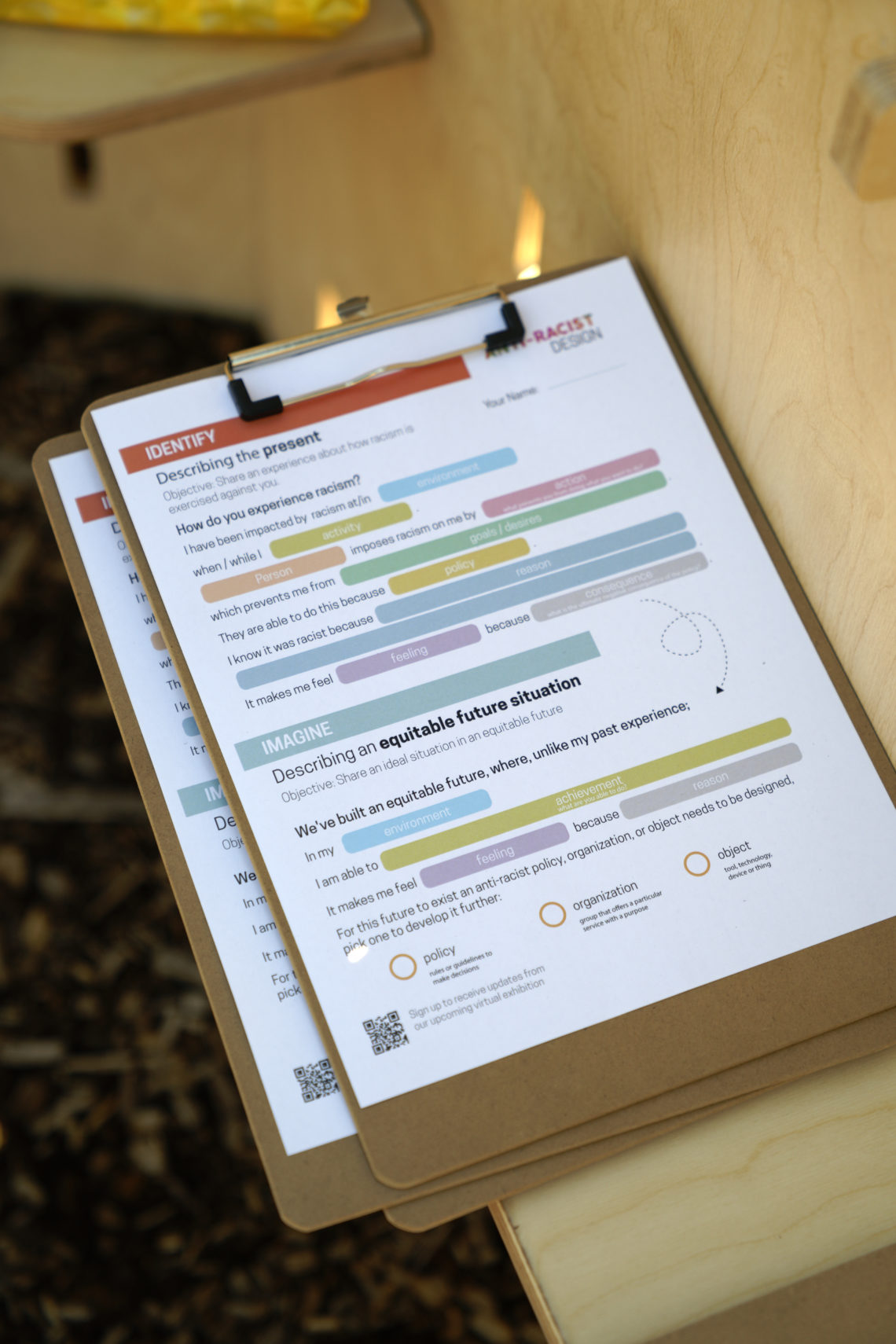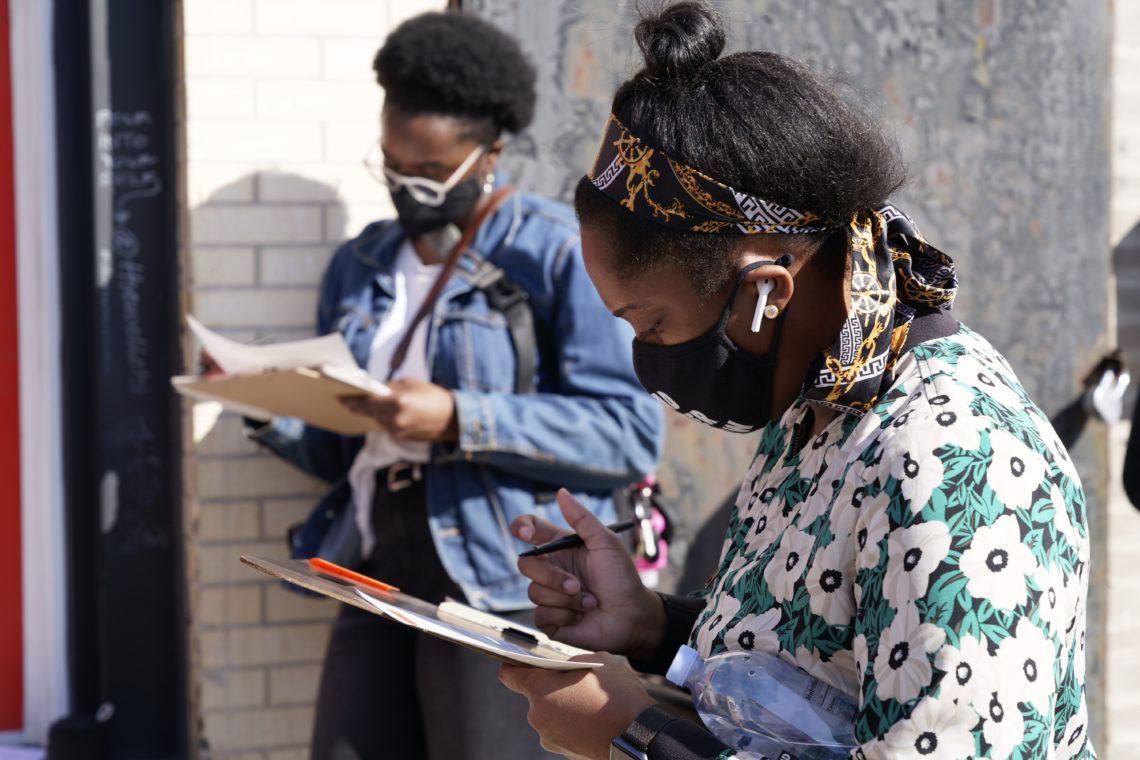

Located on the South Side of Chicago in the historic community of Bronzeville, we at ID experience the consequences of the city’s hypersegregation on a daily basis. The COVID-19 pandemic further surfaced and amplified the systemic racism already endemic in our communities. As such, ID faculty member Chris Rudd, along with four ID students, facilitated three anti-racist pop-ups to bring new design methods to Chicago communities. The team sought to intervene and disrupt the racist outcomes further amplified by the pandemic through design and creative placemaking.
Set up in neighborhoods across the city, Anti-Racist Pop-Ups were a set of activities that enabled participants to identify racism, imagine equitable futures, and co-design anti-racist infrastructures where they can be protagonists of change.
Because the possibility of dismantling racism and building equitable futures depends on our collective capacity to identify racism, envision equitable alternatives, and take action, one of Rudd’s goals was not to have a single “professional” designer show up. This was a community exercise for community participants.

“There’s a huge racial gap in the design field. Only three percent of designers are Black in this country,” says Rudd. “I didn’t find out about the field until I was in my 30s. So how do we increase exposure and access? That’s another part of what these pop-ups aim to do.”
Partnering with local Black- and brown-owned businesses, such as FriiStyle Chicago and Birria Ta-Ta-Tacos, Rudd and ID students set up their design pop-ups in neighborhoods across Chicago, including Logan Square, Bronzeville, and Garfield Park. The team brought communities, stakeholders, and experts together on the precipice of segregated neighborhoods to create what Rudd calls “integration zones.”

Anti-Racist Pop-Up worksheet
The framework developed for the pop-ups follows a three-part process, facilitated by worksheets:
- Identify: Participants reflect on a personal experience to identify racism
- Imagine: Participants imagine an equitable future where racism no longer exists
- Infrastructure: Participants prototype an anti-racist object, policy, or organization that needs to exist to enable an equitable future
Although the activity was designed as an individual one to maintain social-distancing, people began to react to these materials collectively and discuss among themselves. The tool quickly became a conversation facilitator, helping people recognize less evident manifestations of racism in their shared experiences. Participants built on each others’ creative work to envision anti-racist infrastructures such as policies, organizations, and artifacts that are often black-boxed in institutional jargon.

“We reworked complex frameworks, such as policy design or an organizational structure, into visual materials that people could easily interact with,” says PhD student Azra Sungu, the research assistant for the project. “We noticed that we were able to provoke new perspectives and deep reflection as people began to collectively react to these materials and discussed among themselves, despite the whole process being presented in a worksheet formatted for individuals.”
Our Anti-Racist Pop-Ups demonstrated an accessible, low-cost, and replicable way of activating collective reflection in communities on racism and empowering individuals to believe they can build a future where racism is eradicated.
The immediate impact of the pop-ups was enabling people to feel that a future where racism no longer exists is indeed possible, and that we, collectively, are the ones who need to build it.
The dominant word used to describe how participants felt about their experience of racism was “angry.” People also felt “disrespected,” “ashamed,” and “invisible.” Conversely, when participants imagined a future without racism, the primary word used to describe how they would feel was “happy”, followed by “human”, “valued”, “empowered” and “safe.” After experiencing the pop-up, participants were asked what their feelings were about engaging with activities aimed at creating anti-racist infrastructures, environments, and experiences. The overwhelming response was “possible.”

The team consolidated the materials and activities of the Pop-Ups in a playbook [see below] that can be used by community organizations to replicate it across different neighborhoods and cities.
Continuing to deploy Anti-Racist Pop-Ups in different locations will enable a diversity of experiences and opinions to surface, which can pave the way for new forms of anti-racist action by leveraging collective creativity.
Tags:
Students
- Azra Sungu
- Mithila Kedambadi
- Monica Villazon San Martin
- Julian Walker
Faculty
- Christopher Rudd
- Daniel Chichester
Partners
BirriaTaTaTacos
Blocks Together
The Chicago Community Trust
FriistyleChi
Healing Illinois
Love All
Norman Teague Design Studios